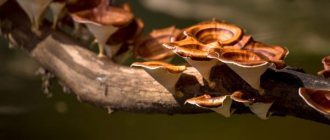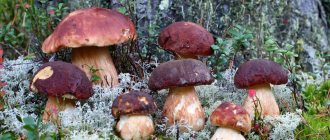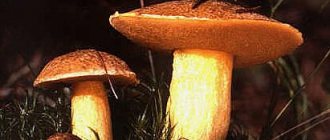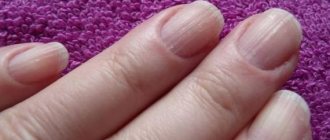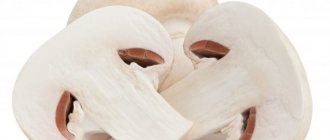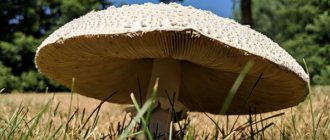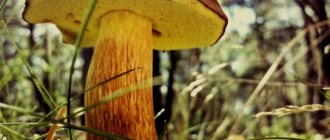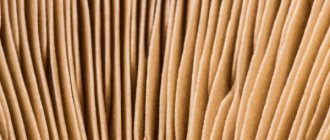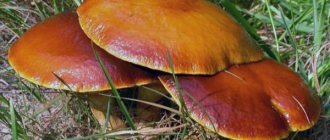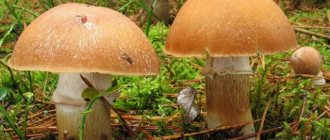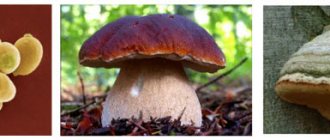general characteristics
Mushrooms contain a combination of animal and plant characteristics. They are related to the plant world by the following features:
- the cell wall is clearly represented;
- attached way of life;
- unlimited growth;
- reproduce by spores;
- can synthesize vitamins;
- presence of vacuoles;
- absorptive way of eating.
The following signs are similar to animals:
- presence of chitin;
- absence of all types of plastids, including photosynthetic ones;
- heterotrophy;
- accumulate glycogen;
- metabolic product - urea.
Due to this specific structure and functioning, they are considered to be the oldest species of eukaryotes. But they have no evolutionary connection with plants. Today, more than 100,000 species of these representatives of the living nature of our planet have been studied. However, scientists believe that the real figure is much higher and can reach 250,000 or even 1.5 million.
Classification of hyphae
In general, hyphae can be classified according to the following characteristics:
Characteristics of hyphae
Hyphae characteristics are an important method for classifying different fungal species. There are three main characteristics of hyphae:
- Binding: Binding hyphae have thick cell walls and are highly branched.
- Generative: Generative hyphae have a thin cell wall, a large number of septa, and are usually less differentiated. Generative hyphae can also be contained in other materials (such as gelatin or mucus) and can also create structures used in reproduction. All types of fungi usually contain generative hyphae.
- Skeletal: Skeletal hyphae contain a long and thick cell wall with few septa. Skeletal hyphae may also be of the fusiform subtype with a swollen midsection surrounded by conical ends.
Hypha Composition
Fungal species are also further classified based on the hyphal systems they contain. There are four main subtypes:
- Monomytic: While virtually all types of fungi contain generative hyphae, those that only exhibit this type are called monomytic (e.g., fly agaric mushrooms).
- Dimitic: A species that contains generative hyphae in addition to another type of hyphae. The most common combination of dimitic fungi is generative and skeletal.
- Trimitic: Species that contain all three types of hyphae (generative, linking and skeletal).
- Sarcodimitic and sarcotrimitic: Sarcodimitic hyphae are fusiform skeletal hyphae associated with generative hyphae. Sarcotrimitic species contain spindle-shaped skeletal hyphae as well as linking and generative hyphae.
Refraction of hyphae
The appearance of oily or granular hyphae under the microscope is called helminthic. The term is also used to further classify the hyphae of various species.
Cell division
Hyphae can be classified based on the presence of internal septa (septate versus aseptate). Hyphae can also be distinguished from species that produce pseudohyphae through cell division. Pseudohyphae is a form of incomplete cell division in which the dividing cells do not separate. There are several species of yeast that produce such pseudohyphae.
Mushroom structure
The cap and stem are the fruiting body. And the “working” part - the mycelium or mycelium - is located inside the wood, soil or substrate. The fruiting body does not live long, about 10-15 days. The mycelium can live even hundreds of years. It is resistant to low temperatures and drought.
Under unfavorable conditions, the mycelium stops its development. Under suitable conditions, the mycelium “wakes up” and continues to grow, but may not form fruiting bodies. The mycelium consists of thin intertwining threads - hyphae.
More than it seems
As anyone interested in mycology knows, what grows on the surface of the earth, tree bark or other suitable substrate, and what we used to call a “mushroom”, is in fact only the fruiting body - the reproductive organs of a fungal organism, and this organism itself is located inside the substrate , is called MYCELIUM and can occupy a very considerable area. In fact, you can stand in a forest clearing, looking at a modest fungus growing in front of you, and the mycelium of this fungus can spread, under your feet, for many kilometers in all directions.
And all this - both the huge, all-penetrating mycelium and the fruiting bodies themselves consist of mushroom hyphae.
What are hyphas
A fungal hyphae is a typical morphological structural unit of a given organism.
This is a cylinder-shaped tube (5 to 10 µm in diameter). There are species in which hyphae grow up to 170 microns. Inside the shell of thin filaments there is multinucleated plasma, it forms new cells at the tip.
Irina Selyutina (Biologist):
Hyphae can unite into:
- rhizomorphs: more or less loose strands (several meters long and several millimeters thick);
- sclerotia: dense plexuses from which the fruiting organs are formed.
The entire collection of fungal hyphae makes up the mycelium (mycelium). That part of it that is located in the soil and, accordingly, hidden from human eyes is called the “vegetative body.” In cap mushrooms, the part located above the soil surface and intended for sporulation is called the “fruiting body.” Groups of hyphae that are tightly intertwined in the fruiting bodies form plectenchyma or false tissue, or pseudoparenchyma. In appearance, plectenchyma resembles the main tissue of plants - parenchyma, however, it is not formed by three-dimensionally dividing cells, but simply by closely spaced hyphae. The layer of hyphae covering the cap contains pigments that give it a specific color.
The mycelium constantly grows in length, at the end the threads begin to branch, and the protoplasm continuously moves towards the young part of the thread. Aged areas can be separated by a wall, which appears due to the ingrowth of the hyphal membrane.
Notes
- Brock Biology of Microorganisms/Madigan M; Martinko J. - 11th. - Prentice Hall, 2005. - ISBN 0-13-144329-1.
- Maheshwari, R.
Fungi: Experimental Methods In Biology. - Second. - CRC Press, 2016. - P. 3. - ISBN 978-1-4398-3904-1. - ↑ 1 2
Gooday, G. W. (1995).
“The dynamics of hyphal growth.” Mycological Research
.
99
(4): 385–389. DOI:10.1016/S0953-7562(09)80634-5. - Steinberg G.
Hyphal growth: a tale of motors, lipids, and the Spitzenkörper (English) // Eukaryotic Cell: journal. - 2007. - Vol. 6, no. 3. - P. 351-360. - doi:10.1128/EC.00381-06. - PMID 17259546. - Moore, David. Robson, Geoffrey D. Trinci, Anthony PJ 21st Century Guidebook to Fungi. Publisher: Cambridge University Press 2011 ISBN 978-0521186957
- Hyphal System (undefined)
. Illinois Mycological Association. Access date: February 11, 2007. Archived October 14, 2006. - Corner E. J. H. (1966). “Monograph of canthareloid fungi.” Ann.
Bot. Mem .
2
: 1—255. - See Meinhard Moser's Glossary, translated by Simon Plant: Keys to Agarics and Boletes
(Roger Phillips 1983) ISBN 0-9508486-0-3. - See Section "Microscopic Features..." 2006 Summer Workshop in Fungal Biology for High School Teachers Archived June 25, 2008, Hibbett lab, Biology Department, Clark University, "Guidelines for collecting and identifying macrofungi (basidiomycetes)."
- Kaiser, Gary E.
II: FUNGI
(unspecified)
(June 1, 2014). Date accessed: March 10, 2022.
Kinds
Hyphae absorb nutrients
Mushroom hyphae have no color. Sometimes the shoots become yellowish or brown.
Depending on the presence of partitions, threads can be divided into groups:
- Aseptated: hyphae without diametrical walls, i.e. non-cellular. Inherent in lower mushrooms.
- Septated: have partitions (in the center of which holes are preserved), which create individual cells, therefore they are also called multicellular. All higher ones: cap fungi, some mold fungi and others have this type of hyphae.
Functions
Fungal hyphae have the main task of absorbing, transferring useful substances and reproducing.
Nutrition
Absorption of water and food is the main function of hyphae.
There are threads that are modified into haustoria, catcher loops, and more. By the nature of their nutrition, all mushrooms are heterotrophs, but according to the type of nutrition they are divided into:
- Saprotrophs: most molds, cap fungi and yeasts. The specificity is that the body is able to create a mycelium from hyphae more than a kilometer long. Thanks to this, the body communicates closely with the external environment.
- Parasites: feed on other living organisms.
- Symbionts (symbiotrophs): enter into mutually beneficial relationships with representatives of other species of living organisms, forming mycorrhiza.
- Predatory fungi: capable of eating some animal organisms, but are able to live as saprotrophs.
Irina Selyutina (Biologist):
At the moment, most mycologists are inclined to believe that the saprotrophic type of nutrition of fungi is primary, but parasitism is secondary, arising in the process of evolution as a result of adaptation to life in new, often unfavorable conditions with competition for habitats. More than 10,000 species of parasitic fungi are now known, capable of living on a variety of plants and animals, other fungi and lichens. Therefore, they are very diverse both in lifestyle and nutrition. Some species are narrowly adapted and feed on only one type of host organism. Others, on the contrary, are able to use for their own purposes a number of host species belonging not only to different families, but even to other kingdoms of living nature.
Almost every cell of the mycelium is separated from the environment by a thin cellular partition. Digestive enzymes influence the nutrient medium and facilitate its digestion outside the cell. Then the product prepared in this way is absorbed by the entire cell.
Reproduction
Mushrooms can reproduce in three ways:
- Asexual: reproduction occurs through endo- and exogenous spores. Endogenous are formed inside sporangia. And exogenous spores develop on the processes of the mycelium - conidiophores. When a spore finds itself in a suitable environment, it awakens, grows, and a mycelium appears.
- Sexual: this type of reproduction is characterized by its diversity. Certain types of organisms reproduce by combining the insides of two cells located at the tips of hyphae.
- Vegetative: carried out in several ways:
- when separating from the main mass of the mycelium its parts capable of independent development;
- arthrospores (oidia), which are formed when hyphae disintegrate into individual short cells, each of which gives rise to a new organism;
- chlamydospores: they have a thick, dark-colored shell, are able to tolerate unfavorable conditions, then germinate most often as mycelium;
- budding: the entire mycelium or individual cells.
The structure of lichens
Fungi are found in some organisms. Some of them are lichens. They are formed by fungal hyphae and blue-green algae cells. On the surface, the threads intertwine most closely and form a protective crust. It contains many types of pigments that give the lichen its different colors. At first glance, it may seem that the fungus and algae exist mutually beneficial in the body. But numerous experiments have shown that this is not so. Scientists have separated both components. And it turned out that the algae is able to live independently, and the hyphae of the fungus die. This means that lichen is an example of a parasitic existence. The fungus lives in it at the expense of algae, which synthesizes organic substances in the process of photosynthesis.
